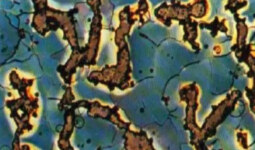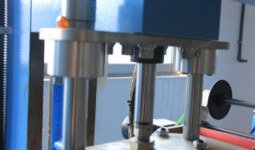Use drilling and tapping center machines for mold processing. If you want to achieve higher power and precision requirements and better appearance quality, you must choose from machine tool selection, tool holder selection, tool selection, processing plan, program generation, and operator Requirements and other aspects are optimized. So what should we pay attention to?
- 1. When the mold cavity is milled, the file margin should be properly controlled according to the roughness of the processing surface. Regarding parts that are more difficult to mill, if the surface roughness of the processing is poor, you should leave more repairing allowance; and for the simple processing parts such as planes and right-angle grooves, the surface roughness value of the processing should be reduced as much as possible to reduce the repairing work. To prevent the accuracy of the cavity surface from being affected by the large-area repair file.
- 2. When the ball end milling cutter mills the curved surface, the cutting speed at the tip of the ball cutter is very low. If the ball cutter is used to mill a steeper surface straight on the machined surface, the quality of the surface cut by the tip of the ball cutter is relatively poor, so The speed of the spindle should be increased appropriately, and cutting with the tip of the tool should be avoided.
- 3. In the milling of curved parts, if the parts are found to have poor heat treatment, cracks, uneven arrangements, etc., the processing should be stopped in time to prevent wasting man-hours.
- 4. Prevent straight cutting. There are two types of flat-bottomed cylindrical milling cutters, one is that the end face has a hole, and the end edge is not in the center.The other is that the end face has no holes, and the end blades are connected and pass the center. When milling a curved surface, the end mill with a hole cannot feed straight down like a drill, unless the process hole is drilled in advance. Otherwise, the better way is to feed the tool diagonally downward, and then use the side edge to cut laterally after reaching a certain depth. When milling the groove surface, the process hole can be pre-drilled for cutting. Although the effect of straight cutting with a ball-end milling cutter is better than that of a flat-bottomed end mill, it is better not to use this cutting method because of the excessive axial force that affects the cutting effect.
- 5. When milling a relatively complex surface of a mold cavity, a longer cycle is generally required. Therefore, the machine tool, fixtures, and tools should be properly checked before starting milling to prevent malfunctions in the middle, affecting the machining accuracy, or even Form waste.
Drilling and tapping center machines use faster mechanisms and drive components to increase the tool change speed or increase the action speed on the basis of the traditional automatic tool change device. For example, the tool change speed of the mechanical cam structure is much higher than that of hydraulic and pneumatic Structure, by designing the form and position of the magazine and tool changer to increase the tool change speed.




